Audi Q8 vs Volvo XC90 – Vilken modell imponerar mest i vardagen?
Två bilar, en duell: Audi Q8 möter Volvo XC90.
Vem imponerar mest när det gäller prestanda, förbrukning och prisvärde? Ta reda på det nu!
The SUV Showdown: Audi Q8 vs. Volvo XC90
The luxury SUV segment is fiercely competitive, with each brand vying to offer the best in performance, comfort, and technology. In this article, we take an in-depth look at two standout models: the Audi Q8 and the Volvo XC90. Both vehicles offer an array of features and possess unique attributes that cater to discerning buyers. This comparison will explore their technical specifications, innovations, and overall appeal.
Power and Performance: Engine Options Galore
The Audi Q8 showcases a diverse lineup of engines, including diesel MHEV, petrol variants, and a plugin hybrid option. Engine outputs vary significantly, from 231 hp to a staggering 640 hp, providing ample choices for both efficiency seekers and performance enthusiasts. The Q8’s engines feature smooth automatic gearboxes and are coupled with an all-wheel-drive system, ensuring impressive handling in various conditions.
In contrast, the Volvo XC90 offers powerful options as well, but with fewer variants: the petrol MHEV and a plugin hybrid that can generate up to 455 hp. Although its maximum power may not match the Q8, the XC90 compensates with its efficient torque distribution, boasting up to 709 Nm. Both models demonstrate remarkable acceleration, with the Q8 reaching 0-100 km/h in as little as 3.6 seconds versus the XC90’s best time of 5.4 seconds.
Efficiency Meets Luxury: Fuel Consumption and Emissions
When it comes to fuel efficiency, the Audi Q8 offers a range of consumption levels depending on the configuration. The diesel options see figures around 8.1 L/100 km, while hybrid variants exhibit impressive consumption rates of 1.3 L/100 km. The Q8's electric range of 82 km (with a battery capacity of 22 kWh) adds to its efficiency profile, making it a compelling option for eco-conscious drivers.
The Volvo XC90, however, outshines the Q8 in hybrid efficiency, with a consumption rate of just 1.2 L/100 km. Its smaller battery capacity of 14.7 kWh gives it an electric range of 71 km, sufficient for short commutes and city driving. With CO2 emissions as low as 30 g/km, the XC90 meets stringent regulations, appealing to buyers focused on sustainability.
Interior Craftsmanship and Comfort: A Seating Affair
Both the Audi Q8 and Volvo XC90 come equipped with opulent interiors that prioritize comfort and usability. The Q8 can comfortably seat five passengers and boasts a trunk capacity of 605 liters, making it suitable for families and travelers. The cabin is adorned with high-quality materials and cutting-edge technology, including Audi's MMI infotainment system, ensuring connectivity and convenience.
The XC90 goes a step further by offering seating for seven, ideal for larger families. Despite its smaller trunk capacity of 262 liters with all seats up, it maintains a premium feel with Scandinavian design elements and advanced safety features. Volvo's commitment to safety makes the XC90 an attractive choice for those prioritizing family security.
Design Aesthetics: A Tale of Two Styles
Design is subjective, but both the Audi Q8 and Volvo XC90 present striking visual statements. The Q8 is characterized by its bold and aggressive stance, highlighted by its octagonal grille and LED lighting signature. This SUV embodies Audi’s sporty lineage while projecting a strong presence on the road.
On the other hand, the XC90 showcases a more understated elegance, with clean lines and a sophisticated silhouette. Its taller build and distinctive vertical taillights convey a sense of robustness synonymous with Volvo. This design philosophy aligns well with the brand's focus on safety and comfort.
Technological Advancements: Infotainment and Driver Assist
Both vehicles push boundaries in adopting technology as integral to the driving experience. The Audi Q8 features a dual-screen layout that seamlessly integrates controls and infotainment systems, making it intuitive yet sophisticated. Advanced driver-assistance systems, including adaptive cruise control and lane-keeping assist, enhance driving pleasure and safety.
The Volvo XC90 is similarly equipped, boasting a user-friendly touchscreen interface that controls most vehicle functions. Its comprehensive safety suite includes Pilot Assist, which provides semi-autonomous driving capabilities. Furthermore, Volvo's emphasis on clean air makes the XC90 an eco-conscious choice through its advanced air filtration system.
Conclusion: Audi Q8 vs. Volvo XC90—Which One Reigns Supreme?
Choosing between the Audi Q8 and the Volvo XC90 ultimately depends on personal preferences and needs. The Q8 excels in performance and luxury, providing a broad engine range and exhilarating acceleration. Conversely, the XC90 stands out with its spacious interior, impressive efficiency, and safety-oriented features.
Both SUVs cater to different aspects of luxury and performance, ensuring buyers can find the right model that suits their lifestyle. Whether you prioritize performance or family comfort, the Audi Q8 and Volvo XC90 are excellent choices that will undoubtedly deliver satisfaction on every journey.
Nu blir det konkret: de tekniska skillnaderna i detalj
Kostnader och förbrukning: Pris och effektivitet är avgörande faktorer vid köp – och just här visar sig ofta de största skillnaderna.
Volvo XC90 har ett knappt märkbar prisförsprång – den börjar på 940400 kr, medan Audi Q8 kostar 1021400 kr. Skillnaden är ungefär 80998 kr.
Även bränsleförbrukningen visar skillnader: Audi Q8 klarar sig med 1.30 L och är därmed avgörande snålare än Volvo XC90, som drar 3.50 L. Skillnaden är ungefär 2.20 L per 100 km.
När det gäller räckvidd presterar Audi Q8 en aning bättre: Den klarar upp till 83 km, ungefär 12 km mer än Volvo XC90.
Motor och prestanda: Effekt, vridmoment och acceleration är klassiska värden för entusiaster – och här märks skillnaderna tydligt.
När det gäller motoreffekt har Audi Q8 ett tydligt övertag – 640 hk mot 455 hk. Det motsvarar ungefär 185 hk hk mer.
I accelerationen från 0 till 100 km/h är Audi Q8 avgörande snabbare – 3.60 s mot 5.40 s. Det är ungefär 1.80 s snabbare.
När det gäller toppfart ligger Audi Q8 påtagligt före – den når 250 km/h, medan Volvo XC90 stannar vid 180 km/h. Skillnaden är omkring 70 km/h.
Även vridmomentet skiljer sig åt: Audi Q8 drar en aning kraftigare med 850 Nm mot 709 Nm. Skillnaden är cirka 141 Nm.
Utrymme och praktisk användning: Familjebil eller vardagskompis – vem erbjuder mest plats, flexibilitet och komfort?
Sittplatser: Volvo XC90 erbjuder klart synligt fler sittplatser – 7 mot 5.
När det gäller tjänstevikt är Volvo XC90 lätt lättare – 2080 kg mot 2175 kg. Skillnaden är omkring 95 kg.
När det gäller bagageutrymme erbjuder Audi Q8 avgörande mer plats – 605 L mot 302 L. Skillnaden är omkring 303 L.
Vid maximal lastvolym presterar Volvo XC90 minimal bättre – upp till 1856 L, cirka 101 L mer än Audi Q8.
Även lastkapaciteten visar skillnad: Volvo XC90 lätt bättre – 710 kg mot 665 kg. Skillnaden är ungefär 45 kg.
Vårt omdöme: Audi Q8 visar sig vara är klart överlägsen och blir därmed vår DriveDuel Champion!
I den här jämförelsen är Audi Q8 den mer kompletta allroundbilen.
Audi Q8
Audi Q8 är en imponerande SUV som kombinerar stil och prestanda på ett enastående sätt. Den eleganta designen präglas av en distinkt front och kraftfulla linjer som fångar ögat. Med en lyxig interiör och avancerad teknik erbjuder Q8 en förstklassig körupplevelse som tillfredsställer även de mest krävande förarna.
detaljer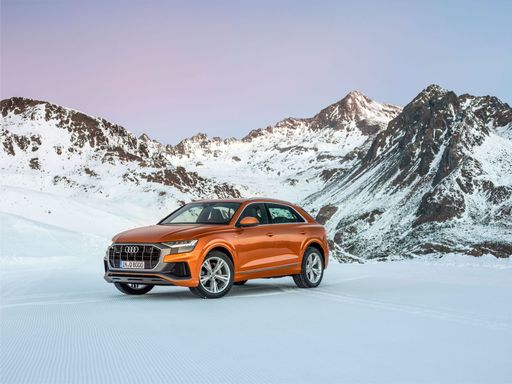 @ audi-mediacenter.com
@ audi-mediacenter.com
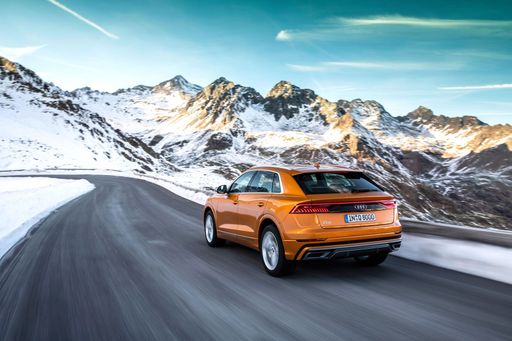 @ audi-mediacenter.com
@ audi-mediacenter.com
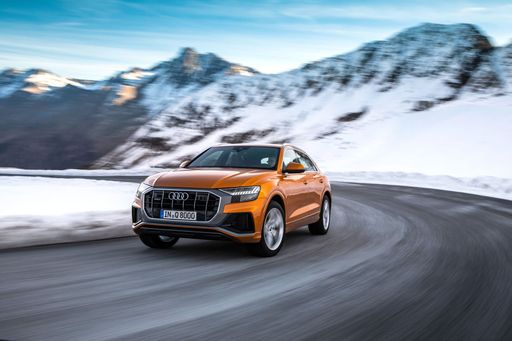 @ audi-mediacenter.com
@ audi-mediacenter.com
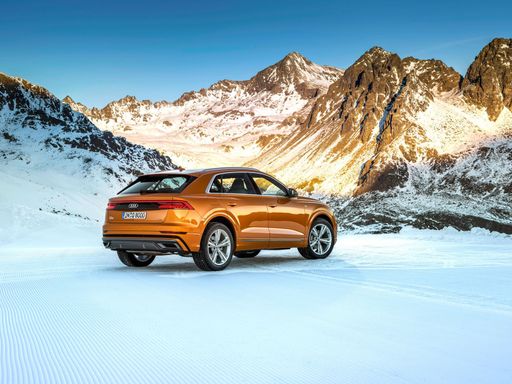 @ audi-mediacenter.com
@ audi-mediacenter.com
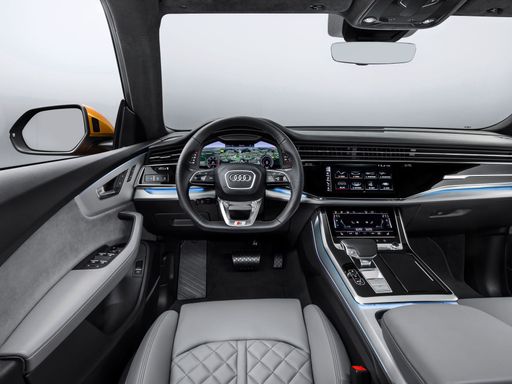 @ audi-mediacenter.com
@ audi-mediacenter.com
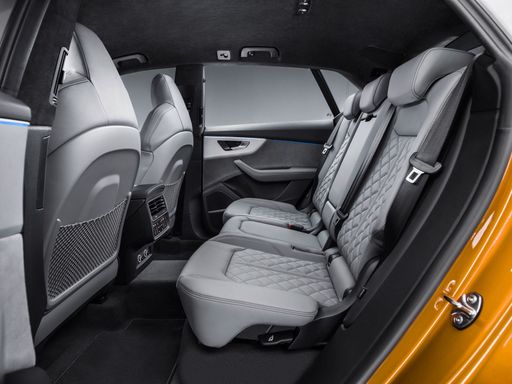 @ audi-mediacenter.com
@ audi-mediacenter.com
 @ audi-mediacenter.com
@ audi-mediacenter.com
Volvo XC90
Volvo XC90 är en imponerande SUV som kombinerar lyx och funktionalitet på ett harmoniskt sätt. Med sitt eleganta design och rymliga interiör erbjuder XC90 en bekväm körning för hela familjen. Dessutom är den utrustad med avancerade säkerhetsfunktioner som gör den till ett tryggt val för både stadskörning och längre resor.
detaljer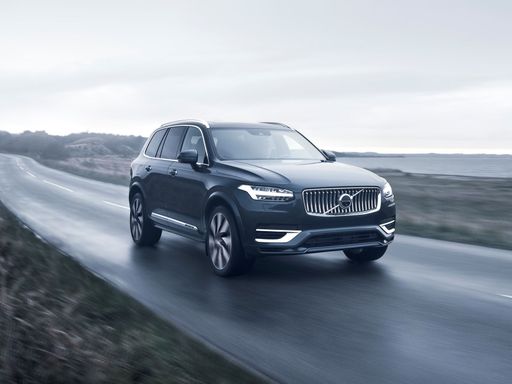 @ media.volvocars.com
@ media.volvocars.com
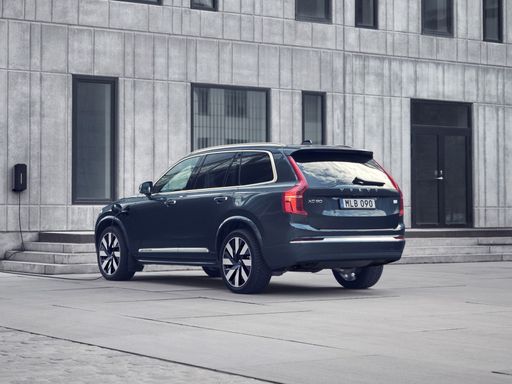 @ media.volvocars.com
@ media.volvocars.com
 @ media.volvocars.com
@ media.volvocars.com
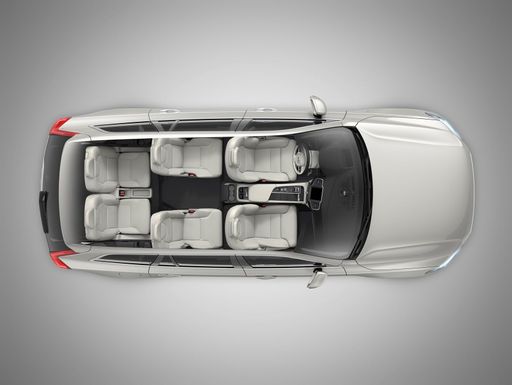 @ media.volvocars.com
@ media.volvocars.com
 @ media.volvocars.com
@ media.volvocars.com

|

|
|
|
|
Kostnader och förbrukning |
|
|---|---|
|
Pris
1021400 - 1827900 kr
|
Pris
940400 - 1140300 kr
|
|
Förbrukning L/100 km
1.3 - 13.1 L
|
Förbrukning L/100 km
3.5 - 8.5 L
|
|
Förbrukning kWh/100 km
-
|
Förbrukning kWh/100 km
-
|
|
Elektrisk räckvidd
82 - 83 km
|
Elektrisk räckvidd
71 km
|
|
Batterikapacitet
22 kWh
|
Batterikapacitet
14.70 kWh
|
|
CO2
30 - 297 g/km
|
CO2
79 - 191 g/km
|
|
Tankvolym
75 - 85 L
|
Tankvolym
71 L
|
Mått och kaross |
|
|---|---|
|
Karosstyp
SUV
|
Karosstyp
SUV
|
|
Säten
5
|
Säten
7
|
|
Dörrar
5
|
Dörrar
5
|
|
Tjänstevikt
2175 - 2490 kg
|
Tjänstevikt
2080 - 2297 kg
|
|
Bagageutrymme
439 - 605 L
|
Bagageutrymme
262 - 302 L
|
|
Längd
4992 - 5022 mm
|
Längd
4953 mm
|
|
Bredd
1995 - 2007 mm
|
Bredd
1923 mm
|
|
Höjd
1697 - 1708 mm
|
Höjd
1771 mm
|
|
Max bagageutrymme
1755 L
|
Max bagageutrymme
1816 - 1856 L
|
|
Lastkapacitet
620 - 665 kg
|
Lastkapacitet
653 - 710 kg
|
Motor och prestanda |
|
|---|---|
|
Motortyp
Bensin Mildhybrid, Laddhybrid, Diesel Mildhybrid, Bensin
|
Motortyp
Bensin Mildhybrid, Laddhybrid
|
|
Växellåda
Automatisk
|
Växellåda
Automatisk
|
|
Växellådsdetalj
Automatisk växellåda
|
Växellådsdetalj
Automatisk växellåda
|
|
Drivtyp
Fyrhjulsdrift
|
Drivtyp
Fyrhjulsdrift
|
|
Effekt (hk)
231 - 640 hk
|
Effekt (hk)
250 - 455 hk
|
|
Acceleration 0-100 km/h
3.6 - 7.1 s
|
Acceleration 0-100 km/h
5.4 - 7.7 s
|
|
Maxhastighet
226 - 250 km/h
|
Maxhastighet
180 km/h
|
|
Vridmoment
500 - 850 Nm
|
Vridmoment
360 - 709 Nm
|
|
Antal cylindrar
6 - 8
|
Antal cylindrar
4
|
|
Effekt (kW)
170 - 471 kW
|
Effekt (kW)
184 - 335 kW
|
|
Motorvolym
2967 - 3996 cm3
|
Motorvolym
1969 cm3
|
Allmänt |
|
|---|---|
|
Modellår
2025
|
Modellår
2024 - 2025
|
|
CO2-effektivitetsklass
G, B
|
CO2-effektivitetsklass
G, B
|
|
Märke
Audi
|
Märke
Volvo
|
Vilka drivlinor finns för Audi Q8?
Tillgänglig som Fyrhjulsdrift.
De visade priserna och uppgifterna är uppskattningar baserade på tyska listpriser och kan variera beroende på land. Denna information är inte juridiskt bindande.
